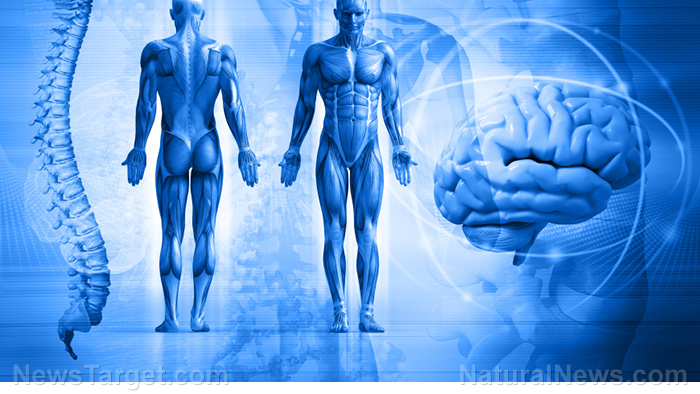
Meningococcal disease – causes, side effects and treatments at NaturalPedia.com
Thursday, June 14, 2018 by Janine Acero
http://www.naturalpedia.com/meningococcal-disease-causes-side-effects-and-treatments-at-naturalpedia-com.html

Meningococcal disease is a bacterial form of meningitis. It is a serious infection of the meninges, which consist of layers of protective tissue surrounding the brain. Meningococcal disease affects the brain membrane, and can cause severe brain damage. It is fatal in 50 percent of cases if left untreated.
Meningococcal disease is caused by the Neisseria meningitidis bacteria. Twelve types of N. meningitides, called serogroups, have been identified, and half of these can cause epidemics.
The disease most often affects infants, preschool children and young people, but may affect a person at any age.
The bacteria are transmitted through person-to-person contact with secretions from the throat of carriers. The infection can spread through smoking, close proximity to (sneezing or coughing on someone), and prolonged contact (kissing) with a carrier.
Other less common forms of meningococcal disease include pneumonia, arthritis, epiglottitis, pericarditis and conjunctivitis.

Known symptoms, risk factors for meningococcal disease
- Convulsions or twitching
- Diarrhea
- Dislike of being handled
- Drowsiness
- Extreme tiredness or floppiness
- Fever
- Irritability, fretfulness
- Grunting or moaning
- Nausea or vomiting
- Photophobia (sensitivity to light)
- Red or purple pinprick rash or larger bruises
- Refusing to feed
- Appetite loss
- Collapse
- Confusion
- Diarrhea
- Difficulty walking
- Drowsiness
- Fever
- General malaise
- Headache
- Muscle aches/soreness
- Nausea and/or vomiting
- Painful or swollen joints
- Photophobia
- Red or purple pinprick rash or larger bruises
- Stiff neck
- Unintelligible speech/Incoherence
The following risk factors increase the likelihood of contracting this disease:
- Age
- Living in close quarters
- Certain medical conditions
- Travel to areas where meningococcal disease is common
Body systems harmed by meningococcal disease
Complications from meningococcal disease may occur at the time of the acute disease or during the recovery period, and may sometimes be severe. These include:
- Amputation
- Arthritis
- Disseminated intravascular coagulopathy (DIC), which prevents blood clotting
- Heart problems, such as pericarditis
- Massive hemorrhage of the adrenal glands
- Neurological problems, such as deafness
- Permanent musculoskeletal problems
Food items or nutrients that may prevent meningococcal disease
The following are some effective home remedies for managing the symptoms of bacterial infections like meningococcal disease:
- Plain yogurt contains probiotics which help prevent fungal infection.
- Garlic helps treat bacterial and fungal infections with its natural antibiotic and antimicrobial properties.
- Turmeric contains curcumin that has antibacterial, antiviral, and antifungal action.
- Honey has antimicrobial properties that help heal wounds and infections.
- Ginger has antifungal action that helps prevent the growth of fungus on the skin.
- Fenugreek seeds has antibacterial activity that inhibit the growth of acne-causing bacteria.
- Lemon juice has antimicrobial and antifungal properties, and is a natural astringent. Orange juice has been found to be much stronger against fungal infections.
- Green tea contains tannins, which effectively treat fungal infections. It also has antimicrobial and anti-inflammatory properties.
- Cranberry juice was found to be very effective against Staphylococcus aureus. It also has antifungal properties and draws out harmful toxins from your system.
- Tomato is a good remedy for bacterial infections as it contains succinic, tartaric, and citric acids that give it antibacterial properties.
Treatments, management plans for meningococcal disease
Early diagnosis and treatment with antibiotics are vital. If you’re opting for the natural approach, here are some versatile and inexpensive remedies which can include meningococcal infection. They have antibacterial, antifungal, antiviral and/or anti-inflammatory properties that all help in preventing skin problems.
- Aloe vera gel has anthraquinones, which have antibacterial and antifungal properties
- Apple cider vinegar
- Coconut oil
- French clay
- Olive oil
- Rubbing alcohol
- Tea tree oil
- Witch hazel
Where to learn more
- It’s all propaganda: New research suggests media coverage about disease outbreaks is designed to control what you think and remember about the disease
- CDC releases new meningitis B vaccine mandate for students, despite recent study showing shot fails to protect
- Will your doctor help you if your child is vaccine-injured?
- Homeoprophylaxis: homeopathic immunization—safe and 90% effective
- Common food additive linked to colon cancer and intestinal inflammation
Summary
Meningococcal disease is a bacterial form of meningitis, which can cause severe brain damage. It is fatal in 50 percent of cases if left untreated.
Meningococcal disease is caused by the Neisseria meningitidis bacteria.
The disease commonly occurs in infants and young children.
Sources include:
Tagged Under: Tags: Meningococcal disease





